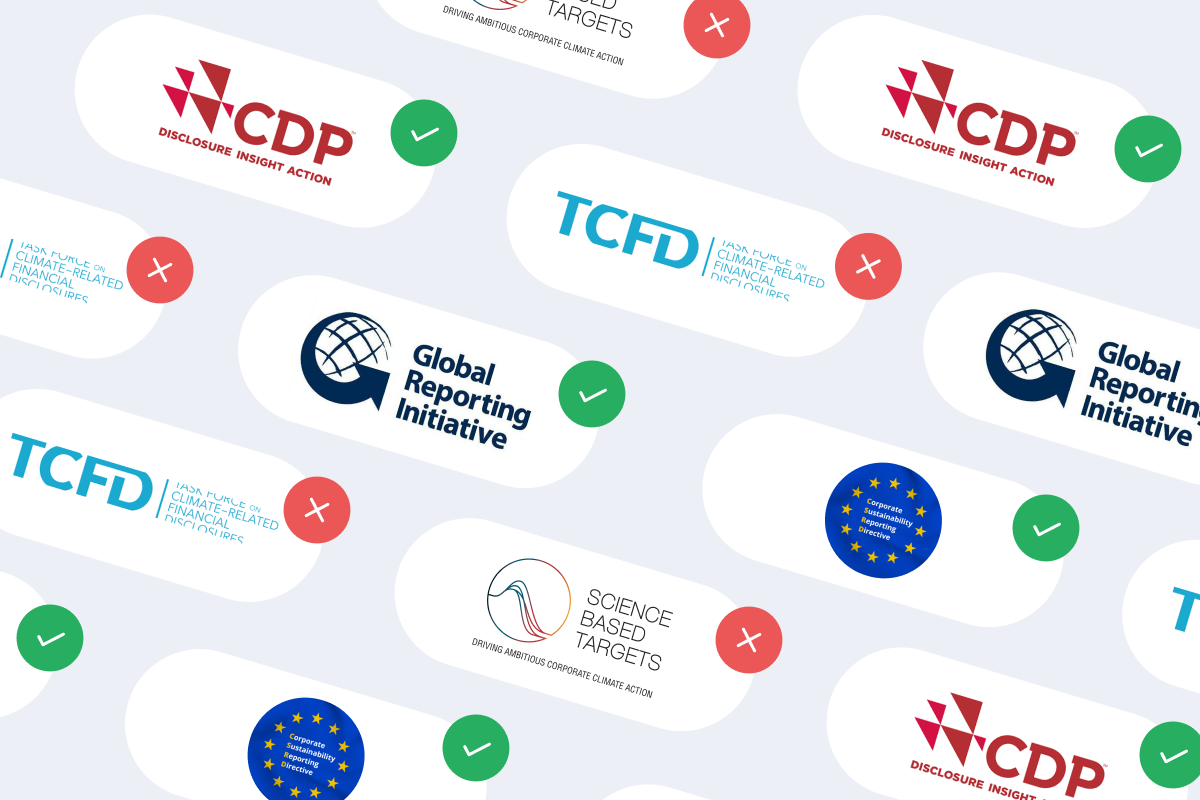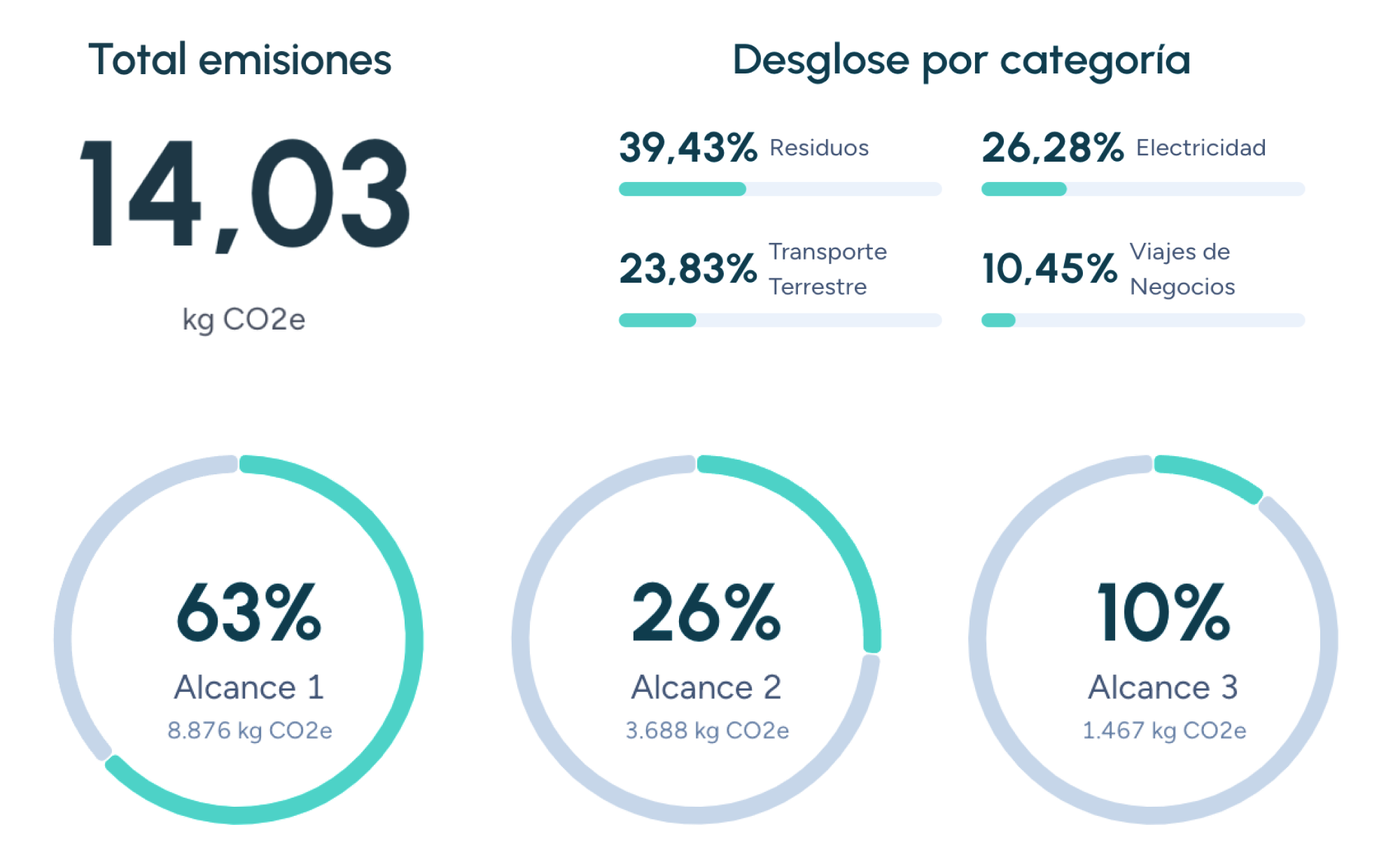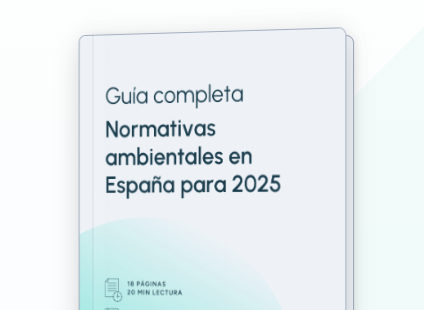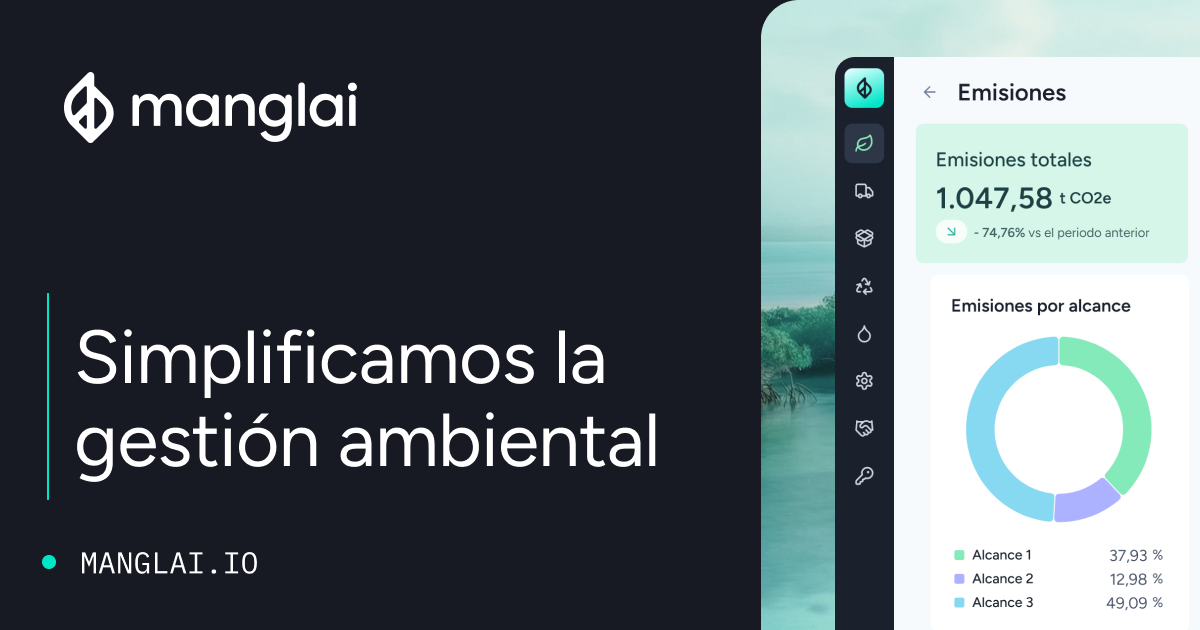Back to the blog
Water footprint
Green Water Footprint: What it is and How it Supports Sustainability
Andrés Cester
CEO & Co-Founder
The green water footprint is one of the three main types of water footprint, along with the blue and grey water footprints.
Often when we talk about sustainability, we focus on the carbon footprint. However, the green water footprint plays an equally vital role in conserving water resources. This concept refers to rainwater stored in the soil and used by plants during their growth.
In this article, we’ll explore what the green water footprint is, how it’s calculated, and how it contributes to global sustainability.
What is the Green Water Footprint?
The green water footprint measures the volume of rainwater absorbed by the soil and used by crops during their growth. Unlike the blue water footprint, which refers to water drawn from surface or underground sources, and the grey water footprint, which measures the water needed to dilute pollutants, the green water footprint relates exclusively to naturally available rainwater that is not extracted from artificial sources.
Key Characteristics of the Green Water Footprint
- Use of rainwater: The green water footprint involves only rainwater stored in the soil, not water withdrawn from rivers or aquifers.
- Dependence on vegetation: This footprint is tied to plants and crops, as they rely on soil-stored rainwater for growth.
- Relevance to agriculture: Particularly significant in farming, the green water footprint determines how much rainwater crops use throughout their lifecycle.
Want to learn more about how water footprint affects agriculture? Read our article: Water Footprint in Agriculture: The Impact of Water Use on Crops.
How is the Green Water Footprint Calculated?
The green water footprint is calculated based on several variables related to the amount of rainwater available in a specific geographical area and the amount of water plants use during growth. Key factors include:
- Annual precipitation: The total rainfall over a given area and time period.
- Evapotranspiration: The water lost through soil evaporation and plant transpiration—essential for understanding how much rainwater is actually used by crops.
- Soil and crop characteristics: The type of soil and crop affect how well the soil retains water and how efficiently plants use it.
Once these variables are assessed, the green water footprint can be calculated for agricultural products, for example, how much water wheat or corn uses during growth.
Basic Formula:
Green Water Footprint = Total Precipitation − Evapotranspiration
This calculation may vary depending on the region, crop type, and agricultural practices used.
Why is the Green Water Footprint Important for Sustainability?
The green water footprint is critical for sustainability because it supports efficient water use in agriculture—one of the most water-intensive sectors globally. Key reasons include:
- Reduced dependence on external water sources: Using rainwater reduces reliance on artificial sources like rivers and aquifers. This is especially crucial in water-scarce areas.
- Encouragement of sustainable farming: Knowing and managing the green water footprint helps farmers adopt sustainable practices, such as using crops that require less water and improving irrigation methods.
- Water conservation and biodiversity protection: Efficient use of rainwater not only alleviates pressure on water resources but also supports aquatic and terrestrial ecosystems, helping preserve biodiversity.
Interested in learning how companies can reduce their water footprint? Read our article: Strategies to Reduce Corporate Water Footprint.
Examples of Green Water Footprint in Agriculture
The green water footprint plays a crucial role in farming. Here are some examples of crops with high green water footprints:
- Wheat: 2,000–3,000 liters per kilogram of grain
- Corn: 2,500–3,500 liters per kilogram of grain
- Rice: 3,500–5,000 liters per kilogram of grain
- Coffee: 1,000–2,000 liters per kilogram of grain
These numbers vary by region and climate but highlight how the green water footprint can indicate the sustainability of agricultural production.
How to Reduce the Green Water Footprint
Reducing the green water footprint means optimizing the use of rainwater in agriculture and promoting more sustainable practices. Strategies include:
- Use of more efficient crops: Choose crops that require less water, particularly in areas with low rainfall.
- Improved agricultural practices: Adopt more efficient irrigation techniques and use technologies that enhance soil water retention.
- Promote regenerative agriculture: Practices like using organic fertilizers and rotating crops improve soil health and its capacity to store water.
Green Water Footprint: A Key Concept for Efficient Water Use in Agriculture
The green water footprint is essential for assessing efficient water use in agriculture and encouraging sustainable practices. By understanding how it is calculated and how it supports sustainability, we can make informed decisions about water management and reduce the environmental impact of production.
To learn more about water footprint and water-saving strategies, check out our articles: Blue Water Footprint: What it is and How it’s Calculated and Grey Water Footprint: The Impact of Water Pollution.
FAQs about the Green Water Footprint
What distinguishes the green water footprint from the blue one?
The green water footprint refers to rainwater stored in the soil and used by plants, while the blue footprint measures water extracted from surface or groundwater sources.
How can the green water footprint support corporate sustainability?
It helps reduce dependence on artificial water sources and encourages more efficient, sustainable agricultural practices.
Which sectors are most affected by the green water footprint?
Agriculture is the most affected, as much of food production relies on rainwater use.
Andrés Cester
CEO & Co-Founder
About the author
Andrés Cester is the CEO of Manglai, a company he co-founded in 2023. Before embarking on this project, he was co-founder and co-CEO of Colvin, where he gained experience in leadership roles by combining his entrepreneurial vision with the management of multidisciplinary teams. He leads Manglai’s strategic direction by developing artificial intelligence-based solutions to help companies optimize their processes and reduce their environmental impact.
Content
Companies that trust us

Water Neutrality: Is It an Achievable Goal for Industry in Spain?
Discover whether water neutrality is viable for Spanish industry. Methods and strategies to reduce water consumption.
08 December, 2025
Technologies for Optimizing the Water Footprint in the Textile and Agri-Food Industries
Discover how digitalization, water reuse, and artificial intelligence are transforming water management in the textile and agri-food sectors
29 October, 2025
Strategies to Reduce the Water Footprint of Companies
Learn techniques and tools to minimize water impact in processes and products.
03 September, 2025
Guiding businesses towards net-zero emissions through AI-driven solutions.
© 2025 Manglai. All rights reserved
Política de Privacidad


